The premise is simple: read one comic every day for the entire year. It seems like a simple task but there is no way that I read 365 comics last year, even if you count the individual issues in collections. So, this year, I am committing myself to this reading challenge, in the hope that I can broaden my reading habits and fully engage with my favorite hobby again.
No concept or organised plan for this week. Why don’t we just get straight into it.
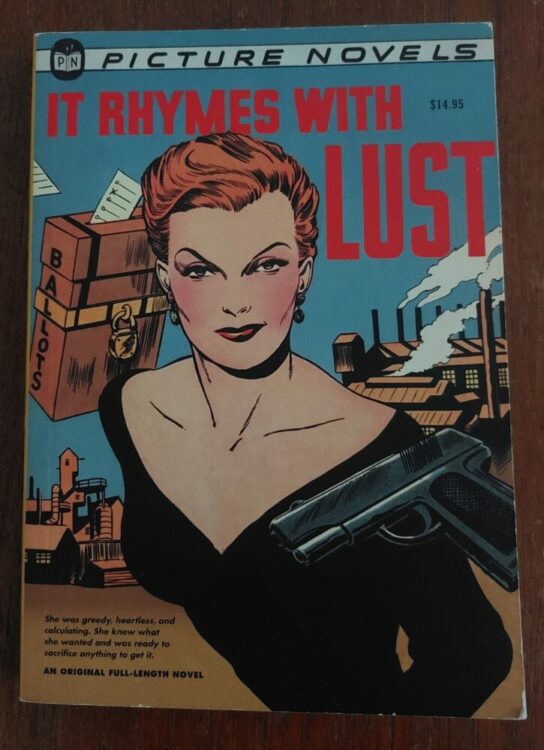
Comic Number 43: It Rhymes With Lust
One of the reasons I decided to do this project was to force myself to find new comics to read. Not new in the sense of ‘just released’ but in the sense that I’ve not read them before or, occasionally, not even heard of them until now. New to me.
I first came across the “picture novel” It Rhymes With Lust in a book about the history of comics. It was part of a discussion about the origins of the graphic novel. This reprint copy then came up for sale at a local comic shop and I thought it must be fate. Obviously, I bought it. Knowing that the term “graphic novel” first appeared in the mid 1960’s and was made popular by Will Eisner in the late 1970’s, I was expecting this picture novel to be more of an illustrated text, but I was so wrong. At 128 pages long, with only the first page featuring an illustration next to a block of text, this book is exactly what I would call a graphic novel. It is an original story produced for a one-off publication, in a book-length format, featuring page after page of comic strip action. And it was first published in 1950. The first American style comic book was Famous Funnies in 1934; this book wasn’t far behind.
It Rhymes With Lust is a good old fashioned crime drama with a central character who gets embroiled in a complicated web of crime and corruption, playing off a number of femme fatales and slimy politicians. It’s got noir cliches dripping down the dark alley walls and enough violence and bloodshed to boil the bones of the Comics Code Authority. The panels are constructed from detailed fine lines and clever fading to reduce backgrounds and promote the central characters or focus of the narrative. This perfectly complements the hard edged script which is equally to the point and focused.
Both of the writers involved with this book went on to have great careers, with Leslie Waller writing a host of novels and Arnold Drake making a name in comics, co-creating the Guardians of the Galaxy, among others. The same is also true of the artists, Matt Baker and Ray Osrin. There is an impressive amount of talent working on this book.
I have read the first two chapters today but know I will finish it within the next 24 hours. It’s exactly the kind of comic I like and I’ve learned a bit of comics history to boot.
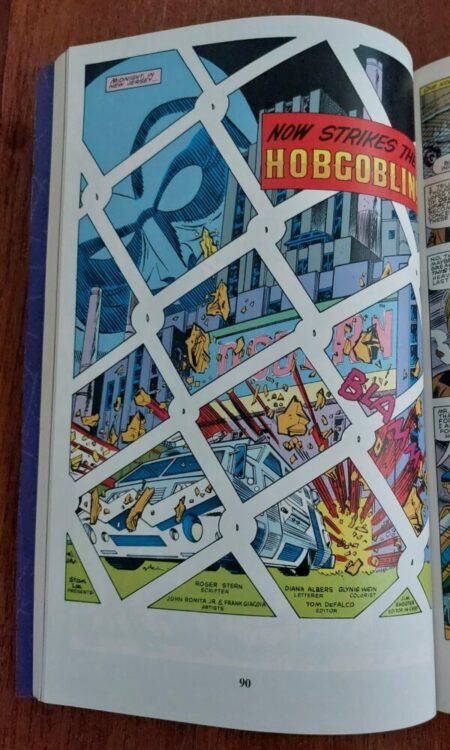
Comic Number 44: The Amazing Spider-Man #238 and 239
Back to some classic Spidey action to start off the week, and I’m continuing to read through The Origin of the Hobgoblin. Whereas the first three chapters in this collection set the scene and introduced the characters, these next two chapters introduce the Hobgoblin himself, in all his orange glory.
Roger Stern continues to deepen the mystery and link the new goblin to Spidey’s archnemesis, the Green Goblin, through a series of break-ins at Oscorp warehouses. The identity of Hobgoblin is wrapped in secrecy and he is always drawn hiding in the shadows or only in silhouette. This imposing dark figure is also shown to be much darker in character, willfully disposing of anyone who knows his true identity. These two chapters give us the mercenary side of Hobgoblin and demonstrate that he is not just another costumed super-villain. Mainly because it highlights that he has no enhanced abilities (yet) and has to distract Spider-Man during their first fight so that he can escape intact, but also that he has an intellect for planning.
John Romita Sr and John Romita Jr work together to produce the high-octane action sequences, but this is still the era of good soap opera in the Spider-Man comics, and the artists are just as successful at illustrating loving moments between families and lovers spats that may impact future narratives.
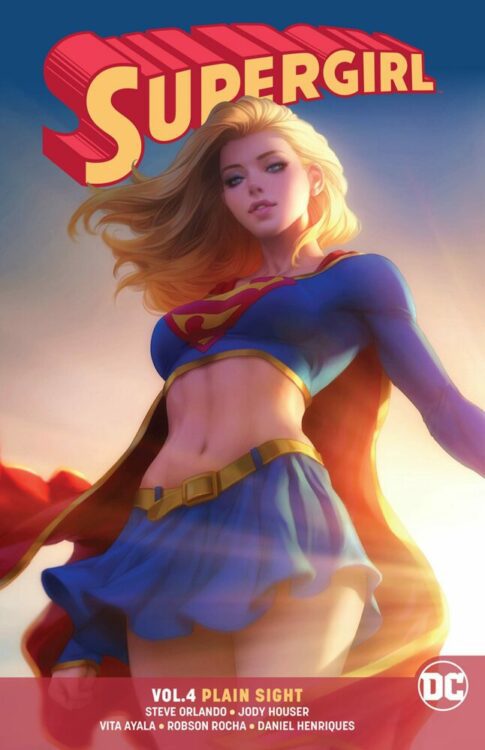
Comic Number 45: Supergirl: Plain Sight
With all this chatter on Twitter (and elsewhere) about the new Flash movie trailer and how a small section of the “fans” seem to already hate Sasha Calle’s version of Supergirl, I had an urge to pick up some Supergirl comics.
Plain Sight, written by Jody Houser and Steve Orlando, collects the final six issues of DC’s Rebirth Supergirl, first published in 2018. The narrative follows a monster-of-the-week format with a larger story building in the background. Houser and Orlando keep a perfect balance between superhero action and family drama; this comic is never just about one aspect of Supergirl, but covers every part of her life. This struggle to maintain both identities is at the heart of this story and, at moments, reflect the Spider-Man/Peter Parker dynamic I’ve been reading a lot of so far this year.
The overpowered super-villains are just a reflection of the school bullies and cruel administration that makes Kara Danvers’ normal life so difficult. The penultimate chapter in the storyline almost takes a step out of the narrative to tell a different story. It is an emotional, heartwarming story about how Supergirl touches the life of a non-binary teenager struggling to come to terms with who they are. They are bullied at school and scared about what others will think at home. Supergirl is there for Lee, without judgement, and helps them to accept themselves for who they are. It is a strong story and the fact that the day is saved by the hero just being a friend, listening and talking rather than punching and killing, is a powerful statement. Orlando and guest writer Vita Ayala demonstrate that Kara’s true strength comes from compassion and inclusion. She is there to protect and save everyone, and stand up for those who need a helping hand.
I read Supergirl comics more than I read almost any other DC comic. I find that most runs tend to start really strong and then slowly drift towards a formulaic narrative structure with the title character used as a foil for characters in other comics, with crossover following crossover. And the most annoying thing is the obsession with “glam” covers which, more often than not, sexualize Supergirl, turning her into a pin-up girl rather than a superhero. But there are some great Supergirl comics out there worth tracking down. The DC New 52 run was very good, for example. I’ll probably get to some of them later in the year, when the Flash movie comes out and that small section of “fans” once again start hating on a character they don’t seem to know anything about.
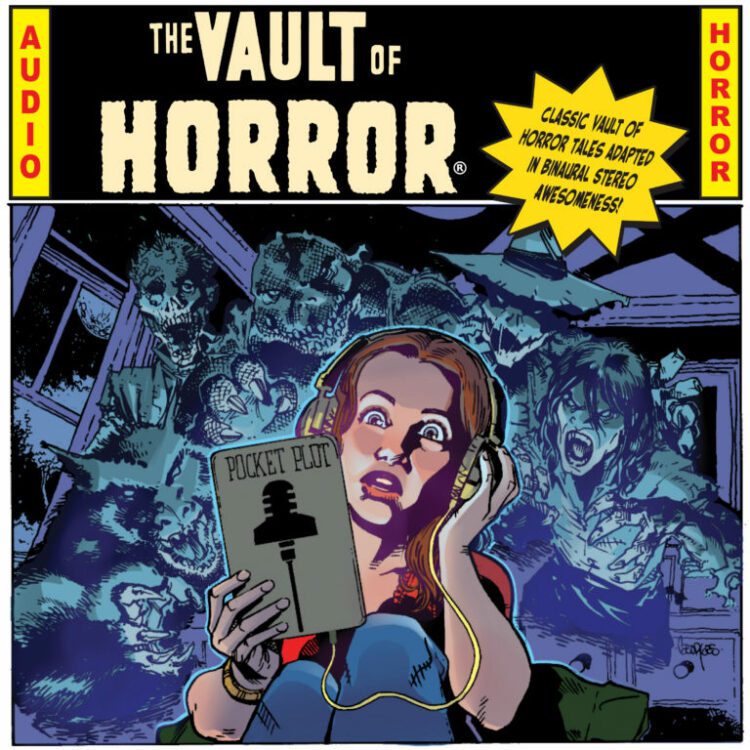
Comic Number 46: EC Comics Presents… The Vault Of Horror (podcast)
Wednesday was a difficult day for me, on a personal level. It was the first day this year where I found it difficult to find motivation to read any comic. I looked at my to-read pile and just didn’t fancy picking any of it up. There was an emptiness that couldn’t be filled by the offerings I had at hand. There was an urge in me to read The Cage by Martin Vaugh-James, but my copy was being elusive, almost as if it was hiding from me, teasing me with its absence.
However, for my birthday this year, I treated myself to a subscription to Audible in an attempt to catch up on the hundreds of books I have been meaning to read over the years. I have this belief that I have more time for listening to stuff than I do for reading, ignoring the fact that I subscribe to two podcasts and am several months behind on both.
Anyway, while browsing Audible I came across The Vault Of Horror podcast: a radio dramatization of the classic EC horror comics. Each episode is hosted by the malevolent Vault Keeper, played by Kevin Grevioux, who gives an impressive over-the-top performance that is hilarious but, at the same time, holds a creepiness just below the jokes that reflects the gruesomeness of the tales. Grevioux perfectly captures the duality of the EC horrors, bringing out the light entertainment side while never drifting too far from the darkness buried in the human soul. Many of EC’s horrors were outlandish and gore orientated but many of them also had a more immediate message, a reflection of the society in which they were written, and this podcast manages to modernize the stories without having to change them in any significant way. From an adaptation point of view, The Vault Of Horror would make a fascinating study, as they have turned a very visual art, that of comics, into a drama without any visuals. At some point it would be interesting to make a comparison of the two.
This podcast from Pocket Universe Productions won several awards a few years ago, and after listening to the first four episodes, I can see why.

Comic Number 47: My Life Among Humans by Jed McGowan
I picked this little book up because there was something appealing about the simplicity of the cover. It seemed light-hearted and fun.
Published by Oni Press, McGowan’s book tells the story of a lone alien, sent to Earth to study humans and report his findings. Part of his mission is to remain a secret but this becomes increasingly difficult, as you would expect.
I enjoyed this quaint story and the relationship that McGown built between the lone alien and Will, the everyday Earthman. However, in places I found it to be almost bland. A combination of the art style, the often intrusive lettering, and the matter-of-fact alien voice-over, produced a flat, emotionless tone that was difficult to escape from. The book is about connections, but more often than not the reader has difficulty connecting with the narrative. I found myself reading the captions with a droning voice in my own head which is not a good sign. And there is a lack of emotion to many of the characters. They exist in the panels but it is difficult to get to know them, to understand who they are outside of what we are told by the aliens incessant voice over.
I picked this up because I liked the simplicity of the cover, unfortunately, for me, that simplicity flowed through the entire book.
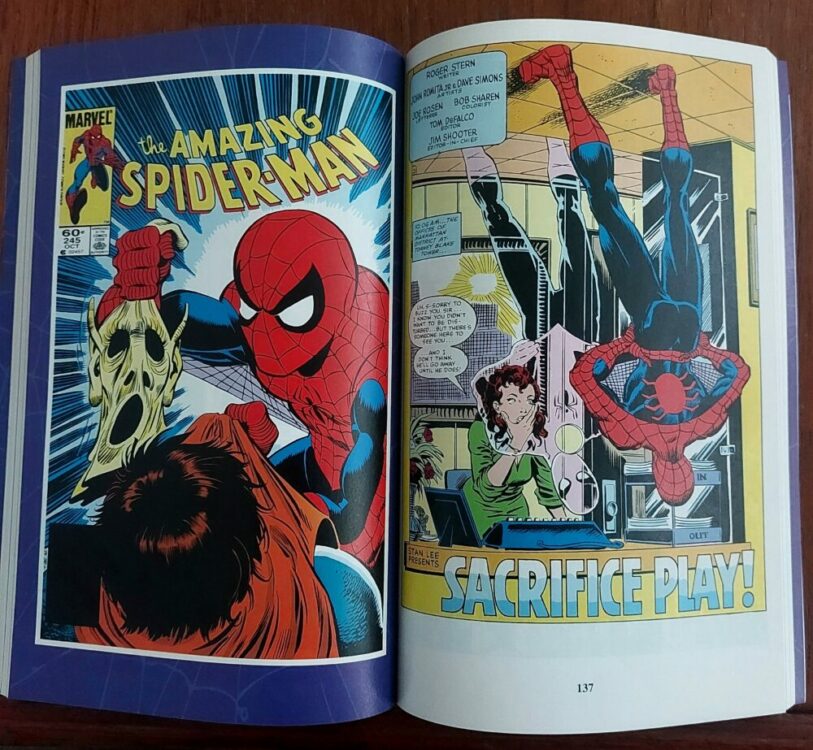
Comic Number 48: The Amazing Spider-Man #244 and 245
More Spidey action, more Hobgoblin action, and more from Roger Stern. In #244, we see Peter Parker’s life get more and more complicated between his relationship with Black Cat, Mary Jane’s return to the city, and having to drop out of college in order to concentrate on photography to pay the bills. It’s lucky for Parker that he has Spider-Man to keep him distracted.
Spidey spends the issue chasing sightings of the orange villain, but the crafty Hobgoblin manages to escape him each time. Even his trusted spider-tracers can’t help him against this clever fiend. However, we readers are treated to information that Spidey isn’t a party to, and the mystery surrounding the Hobgoblin just gets bigger and bigger.
Sacrifice Play, the story in issue 245, is a classic misdirection narrative, leading both the reader and Spider-Man into a confrontation with the Hobgoblin that ends in revealing his face. But Spidey, and us readers, know that Lefty Donovan, the man Spidey un-masks, isn’t the man behind the villain. He is a patsy, a fall guy. And the mystery keeps on rolling.
I love this stuff. It’s classic superhero schmaltz. Roger Stern is so good at weaving Parker’s life around Spidey’s adventures and each issue is packed with story. Fight scenes stand out but the life dramas are where these issues excel. Love troubles, money troubles, career and education troubles; this is the stuff that made Spider-Man a popular title in the 1970s. The superhero element was always present but, by itself, it is nothing special. The excitement of reading Spider-Man lies in the soap opera and the mysteries. And John Romita Jr’s artwork is still bearable at this time, probably because he worked with other artists such as Dave Simons or Klaus Janson, who kept his style in check.
I’m nearly at the end of this collected Origin of the Hobgoblin but we all know that there’s more to come. So much more.
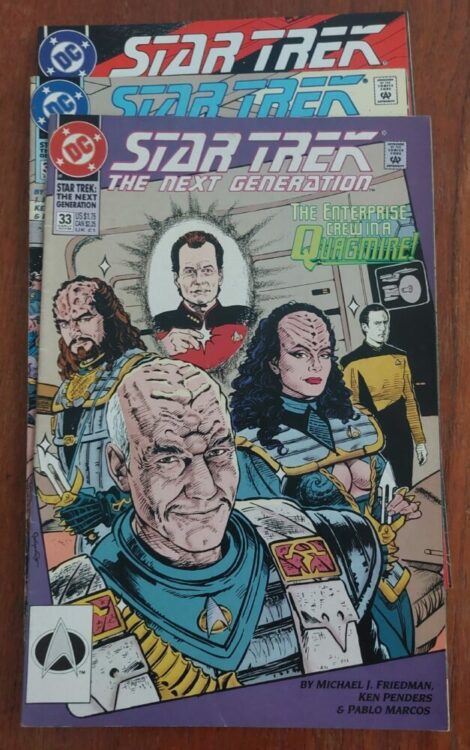
Comic Number 49: Star Trek: The Next Generation #33 (DC Comics 1992)
The new series of Star Trek: Picard has started (insert a meme of Kermit the Frog going ape here). So, what better time to drag out the few Star Trek comics that I own? Just like my favorite franchise, Doctor Who, I’ve never really got into the extended universe that surrounds these characters and their adventures, therefore my collection of comics is small. Issue 33, however, contains a whole bunch of my favorite things about TNG: Klingons running wild, Q causing chaos, and Miles O’Brien having lunch with Keiko. The writer of this issue — titled The Way of the Warrior (I’ve heard that title before) — Michael Jan Friedman does a really good job of capturing the characteristics of the Enterprise crew and boiling them down into a few panel snippets. The artwork by Kenneth Penders and Pablo Marcos isn’t quite as convincing, and if the various characters weren’t name-checked, it would be difficult to know who they are, especially when the transformation into Klingons happens.
However, the layouts are wonderful. The two-page spreads play with the normal directional reading that was, and is, still popular in mainstream comics. From the moment that Q shows up, the standard Z reading pattern is subtly altered to form S patterns, or N patterns, or a whole collection of lettered shapes. This inconsistency grows from the narrative and Q’s warping of the world around the Enterprise. As the characters are thrown out of their normal routine, so too is the reader forced to adapt to the new status quo. It turns an okay Star Trek comic into something more interesting, and more fascinating from a comics stand point.
And that was Week 7. I’ve nothing further to add except asking you to shout out in the comments below and let me know what you’ve all been reading. I’m always looking for recommendations, although access to comics is my biggest obstacle. Luckily, I have plenty of full boxes waiting to be re-read.

